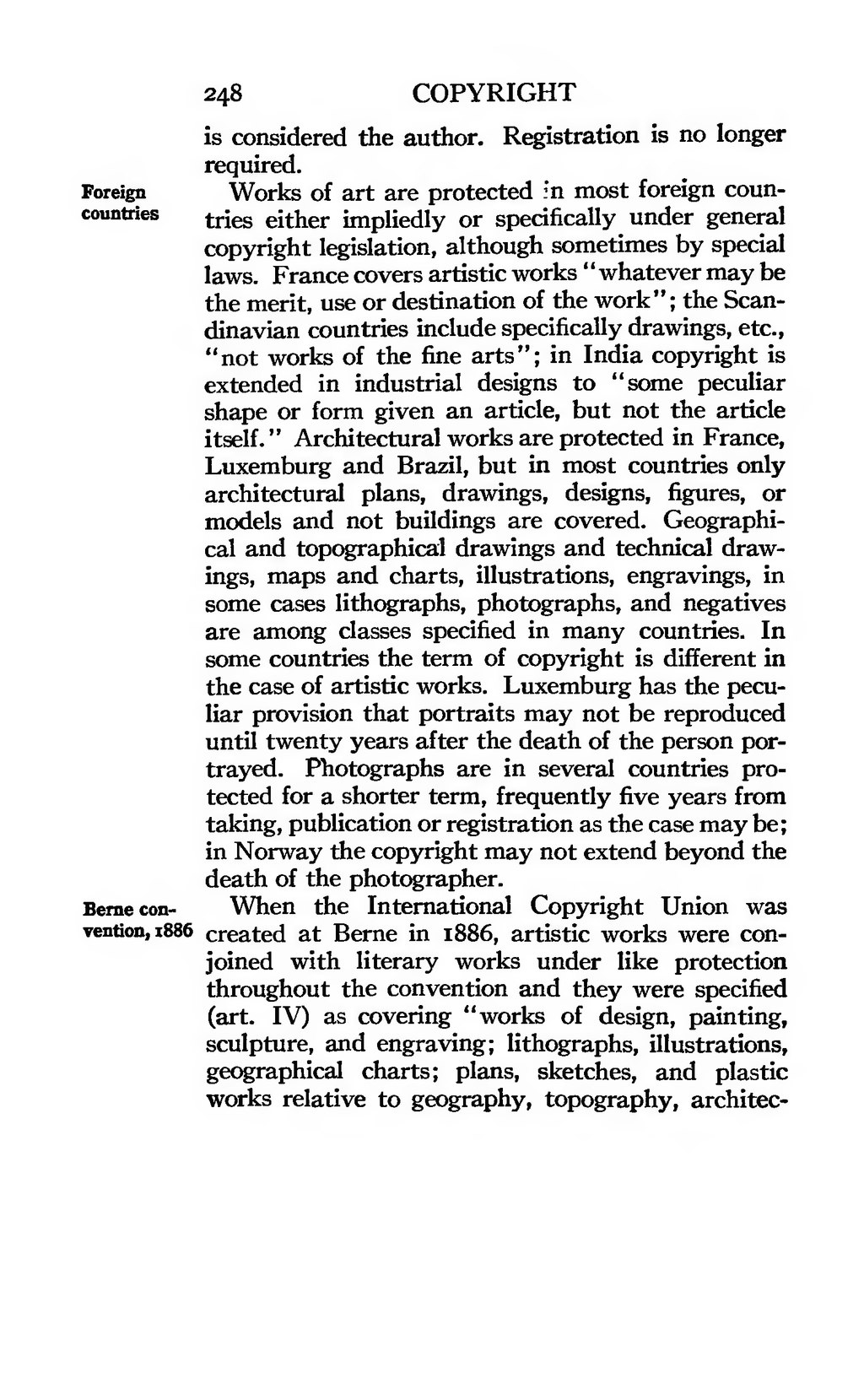is considered the author. Registration is no longer required.
Foreign
countriesWorks of art are protected in most foreign countries either impliedly or specifically under general copyright legislation, although sometimes by special laws. France covers artistic works "whatever may be the merit, use or destination of the work"; the Scandinavian countries include specifically drawings, etc., "not works of the fine arts"; in India copyright is extended in industrial designs to "some peculiar shape or form given an article, but not the article itself." Architectural works are protected in France, Luxemburg and Brazil, but in most countries only architectural plans, drawings, designs, figures, or models and not buildings are covered. Geographical and topographical drawings and technical drawings, maps and charts, illustrations, engravings, in some cases lithographs, photographs, and negatives are among classes specified in many countries. In some countries the term of copyright is different in the case of artistic works. Luxemburg has the peculiar provision that portraits may not be reproduced until twenty years after the death of the person portrayed. Photographs are in several countries protected for a shorter term, frequently five years from taking, publication or registration as the case may be; in Norway the copyright may not extend beyond the death of the photographer.
Berne con-
vention, 1886When the International Copyright Union was created at Berne in 1886, artistic works were conjoined with literary works under like protection throughout the convention and they were specified (art. IV) as covering "works of design, painting, sculpture, and engraving; lithographs, illustrations, geographical charts; plans, sketches, and plastic works relative to geography, topography, architec
